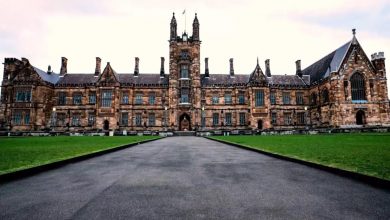Protein synthesis consumes more energy than any other metabolic process in a cell. Proteins, in turn, account for more mass in living organisms than any other macromolecule. They perform nearly every cell function, acting as both functional (e.g., enzymes) and structural elements. The second step in gene expression is translation, or protein synthesis, which involves a ribosome decoding an mRNA message into a polypeptide product.
Amino acids are activated by binding to specific transfer RNA molecules and assembled by ribosomes into a sequence specified by messenger RNA, which has been transcribed from the DNA template. Then, between adjacent amino acids, peptide bonds are formed. The primary sequence of amino acids determines the subsequent folding, post-translational amino acid modifications, and protein packaging after the polypeptide chain is completed. The rate of protein synthesis is governed by the rate of transcription of specific genes, the number and state of ribosome aggregation, and modulation of the rate of peptide synthesis initiation.
The Genetic Code
The mRNA template is translated to create a protein product by converting nucleotide-based genetic information into the “language” of amino acids. A protein sequence is made up of 20 amino acids that are found frequently. Each amino acid in the mRNA is defined by a codon, which is a triplet of nucleotides. The genetic code refers to the relationship between an mRNA codon and its corresponding amino acid.
Due to the general three-nucleotide code, there are a total of 64 possible combinations. This number exceeds the number of amino acids, and each amino acid is encoded by multiple codons. Degeneracy refers to this redundancy in the genetic code. Typically, the first two positions in a codon are important in determining which amino acid will be incorporated into a growing polypeptide, whereas the third position, known as the wobble position, is less important. In some cases, changing the nucleotide in the third position results in the incorporation of the same amino acid.
The Protein Synthesis Machinery
Many molecules and macromolecules, in addition to the mRNA template, contribute to the translation process. Each component’s composition varies across species; for example, ribosomes may contain a different number of ribosomal RNAs (rRNAs) and polypeptides depending on the organism. However, the general structures and functions of the protein synthesis machinery in bacteria and human cells are comparable. An mRNA template, ribosomes, tRNAs, and various enzymatic factors are required for translation.
- Ribosomes – A ribosome is a complex macromolecule made up of catalytic rRNAs (known as ribozymes) and structural rRNAs, as well as a variety of polypeptides. Mature rRNAs account for roughly half of each ribosome. Prokaryotes have 70S ribosomes, while eukaryotes have 80S ribosomes in the cytoplasm and rough endoplasmic reticulum, as well as 70S ribosomes in mitochondria and chloroplasts. When ribosomes are not synthesising proteins, they dissociate into large and small subunits and reassociate during translation initiation.
- Transfer RNAs – Transfer RNAs (tRNAs) are structural RNA molecules that exist in the cytoplasm in a variety of forms depending on the species. Bacterial species typically have 60 to 90 different types. Each tRNA type acts as an adaptor, binding to a specific codon on the mRNA template and adding the corresponding amino acid to the polypeptide chain. As a result, tRNAs are the molecules that “translate” the RNA language into the protein language.
Thus, we can conclude that polypeptides are synthesised during translation using mRNA sequences and cellular machinery, such as tRNAs that match mRNA codons to specific amino acids and ribosomes, which are composed of RNA and proteins that catalyse the reaction. Since several mRNA codons code for the same amino acids, the genetic code degenerates. All living organisms share a nearly universal genetic code. Prokaryotic (70S) and cytoplasmic eukaryotic (80S) ribosomes are made up of a large subunit and a small subunit of varying sizes. Every subunit is made up of rRNA and protein. Eukaryotic cell organelle ribosomes are similar to prokaryotic ribosomes.



